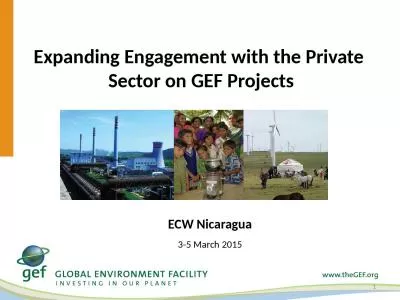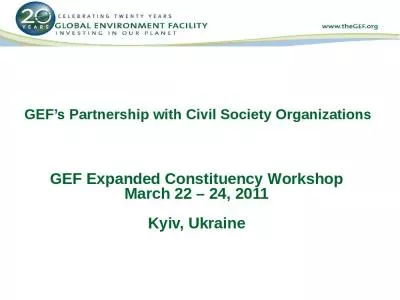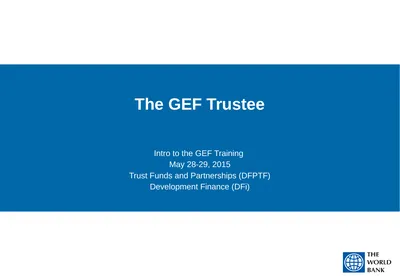PPT-GEF 6 Programming Directions
Author : valerie | Published Date : 2024-03-13
Expanded Constituency Workshop Tbilisi Georgia June 2224 2015 CBD Strategic Plan for Biodiversity 20112020 20 Aichi Biodiversity Targets Strategic goal A Address
Presentation Embed Code
Download Presentation
Download Presentation The PPT/PDF document "GEF 6 Programming Directions" is the property of its rightful owner. Permission is granted to download and print the materials on this website for personal, non-commercial use only, and to display it on your personal computer provided you do not modify the materials and that you retain all copyright notices contained in the materials. By downloading content from our website, you accept the terms of this agreement.
GEF 6 Programming Directions: Transcript
Download Rules Of Document
"GEF 6 Programming Directions"The content belongs to its owner. You may download and print it for personal use, without modification, and keep all copyright notices. By downloading, you agree to these terms.
Related Documents

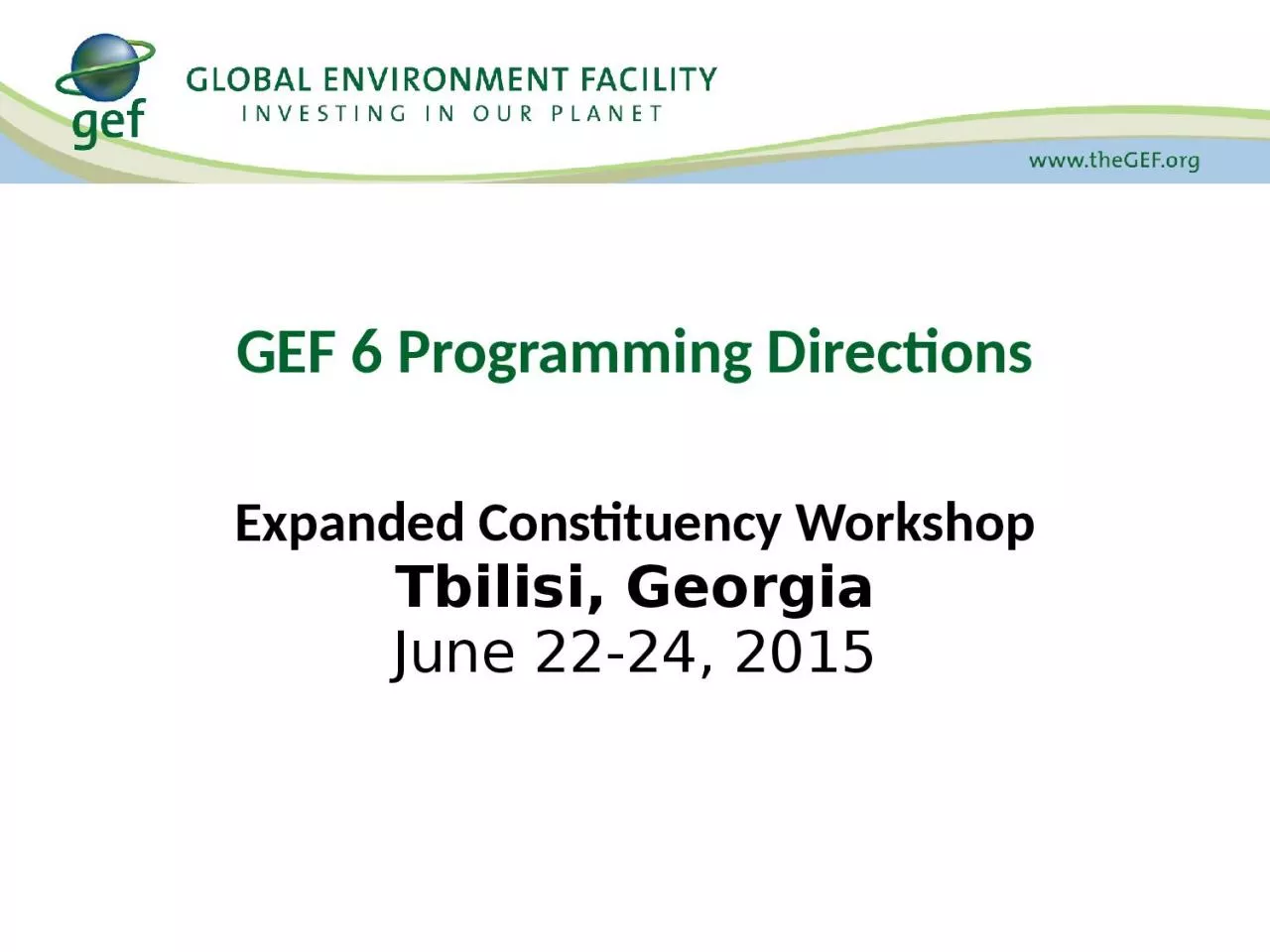
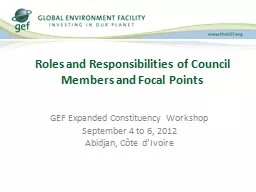
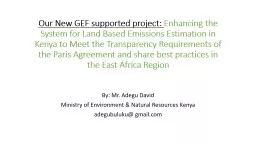

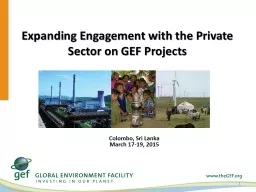
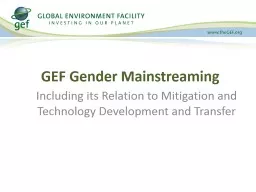

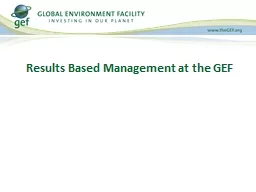
![[FREE]-Programming 16: Python Programming In A Day & C Programming Professional Made Easy](https://thumbs.docslides.com/980148/free-programming-16-python-programming-in-a-day-c-programming-professional-made-easy-c-programming-c-programming-c-programming-language-html-python-python-programming-coding-css-java-php.jpg)
